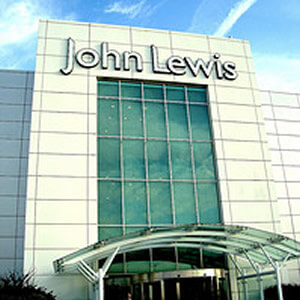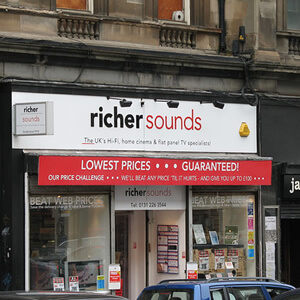Julian Richer, founder of Richer Sounds, the largest independent HiFi and TV store in the UK, recently set the bar extremely for C-level suite executives on how to improve employee engagement. He has set up his company in a trust that upon his death will roll over to his employees. He is, in fact, giving them the business after he is gone.
When asked why he did this, Richer explained that the company was his life’s work. With no children to leave it to, he believes that the ones who helped make it the success it is today should be the ones to have after his death. He believes with their leadership that his life’s work will survive after he is gone.
Richer Sounds is already one of the models of customer service excellence in the UK as well as an example of how to create real employee engagement. Now, it is designed to become employee owned. In fact, in the latest Which? Poll, a survey of over 14,000 people in the UK that ranks the top 100 companies for customer satisfaction based on customer’s experiences, Richer Sounds got five out of five stars for both customer experience and price, a rarity for the survey.

Employee owned companies are rare in the UK, unlike the US where it is growing in popularity to build organizations based on this principle.
But another example of a company that is making employee owned work for their experience is the John Lewis department stores throughout England. For those of you in the US who aren’t familiar with this brand, this is a lot like Dillard’s or Nordstrom. In addition to this retail line, they also have a supermarket chain called Waitrose.
John Spedan Lewis, founder of the company, created the Partnership by signing away his personal ownership rights, establishing a company that was both commercial and democratic – and owned by the employees, who are referred to as Partners. He calls his Partnership program an industrial democracy experiment. He wanted the employees to have active involvement in the company’s success.
Just watch this video about what the employees think of Lewis’s industrial democracy experiment:
It’s no surprise that John Lewis was 5th overall on the Which? Survey. Happy employees make happy customers.
Lewis and Richer are a different kind of leader than most. Their experiments about a new way to engage employees are an example to all the C-suite level executives about what is possible in the realm of employee motivation and engagement.
One C-level executive that should take note is Ryanair’s CEO, Michael O’Leary. In case you are wondering why I said that, simply listen to these three quotes (listed in an article called “33 Daftest quotes”) straight from the man himself about what he thinks about employees:
- #1: To a Ryanair employee who dared to join the Live Twitter Q&A O’Leary was bungling: “Get back to work you slacker or you’re fired.”
- #2: On his opinion about the value of staff: “MBA students come out with: ‘My staff is my most important asset.’ Bullshit. Staff is usually your biggest cost. We all employ some lazy bastards who needs a kick up the backside, but no one can bring themselves to admit it.”
- #3: On his compensation in relation to his team: “I’m Europe’s most underpaid and underappreciated boss. I’m paid about 20 times more than the average Ryanair employee and I think the gap should be wider.”
I bet it will come as no surprise to you to hear that Ryanair was listed as one of the three worst on the Which? Survey…
Employee engagement is a critical aspect of your actual customer experience. As I said before, happy employees make happy customers. Without your employees on board, the customer experience you have in mind will stay right there, in your mind, ignored by the people that are supposed to actually do it.
Part of what we teach at Beyond Philosophy is that you need to have a customer experience statement. This is a summary of what you want your experience to be for your customers that you use to train your employees, particularly the ones that have touch points in the customer experience with your actual customers.
But in order for this statement to be effective, you need to have the buy in of the ones that work with the customers directly. You can create a beautifully worded customer experience statement that effectively communicates your desired experience that you deliver through every possible channel you can think of to your employees, but if they can’t or aren’t willing to do it, it will simply be meaningless words on a page.
Richer and Lewis are pioneers in new ways to create employee engagement. Their strategies are extreme, to be sure, but they are effective. We can all learn from their example of ways we can engage our employees more and as a result get the customer experience we really want for our customers.
What can you take from Richer Sounds and John Lewis to your employee programs to create more employee engagement in your organization? Or do you think these strategies in industrial democracy will end up ruining the organizations that both these leaders are trying to preserve and promote?
| Colin Shaw is founder & CEO of Beyond Philosophy, one of the world’s first organizations devoted to customer experience. Colin has been recognized by LinkedIn as one of the top 150 Business Influencers in the world. He is an international author of four best-selling books on Customer Experience. Colin’s company, Beyond Philosophy provide consulting, specialised research & training from our Global Headquarters in Tampa, Florida, USA. Follow Colin Shaw on Twitter: @ColinShaw_CX |


